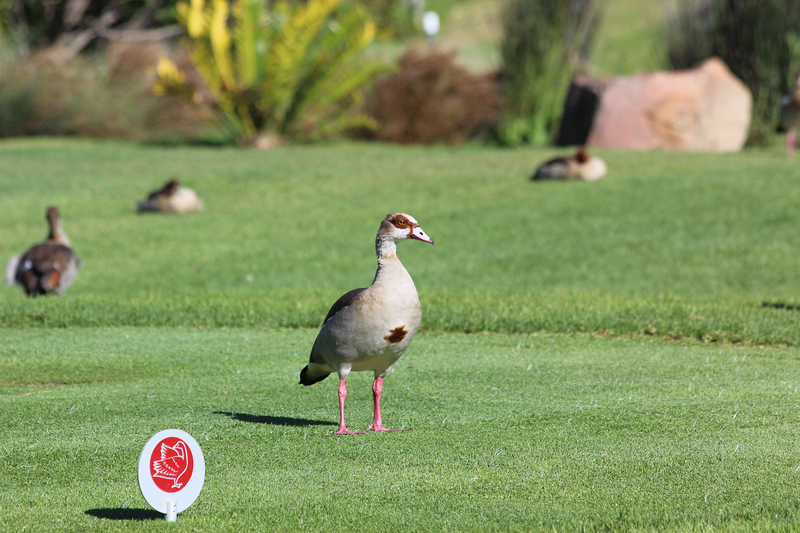Goosing around on golf courses
23 December 2019 | Story Natalie Simon. Photo Richard Gie. Read time 2 min.
“It’s not just golfers who enjoy spending a day on the course,” says Dr Rob Little, manager of the Centre of Excellence at the Fitzpatrick Institute of African Ornithology. “Geese are also drawn to their luscious, irrigated lawns interspersed with artificial water bodies.” Fortunately, research by Little and colleagues suggests there are ways the geese and golfers can co-exist.
Geese on golf courses are a global problem, with suggested solutions ranging from blasting goose distress calls across the greens, deploying trained dogs to harass the offending geese or the display of garish scarecrows. None of which make for a particularly pleasant game of golf, or work effectively in the long term.
A team of staff and students at the Fitzpatrick Institute of African Ornithology studied the behaviour of Egyptian geese on Cape Town’s golf courses and created a valuable data set which shows that geese seek out particular habitat features that make them feel safe.
“The more we understand the behaviours of geese and other birds that are perceived as pests, the easier it will be to create non-harmful solutions to manage them.”
“The best solution for both geese and golfers would be to design golf courses in a way that makes them less appealing to geese,” says Little. “Then, as a secondary measure, falconry is effective at changing the perception of safety for the geese, which makes them less attracted to the golf course.”
Little and his team published the data that supported these findings on UCT’s institutional data repository, ZivaHub: Open Data UCT to encourage other researchers to reuse and build on these data.
“The more we understand the behaviours of geese and other birds that are perceived as pests,” says Little, “the easier it will be to create non-harmful solutions to manage them.”
For more stories like this, take a look at our 2018-2019 UCT eResearch Report. This work is licensed under a Creative Commons Attribution-NoDerivatives 4.0 International License.
This work is licensed under a Creative Commons Attribution-NoDerivatives 4.0 International License.
Please view the republishing articles page for more information.
Research & innovation





































